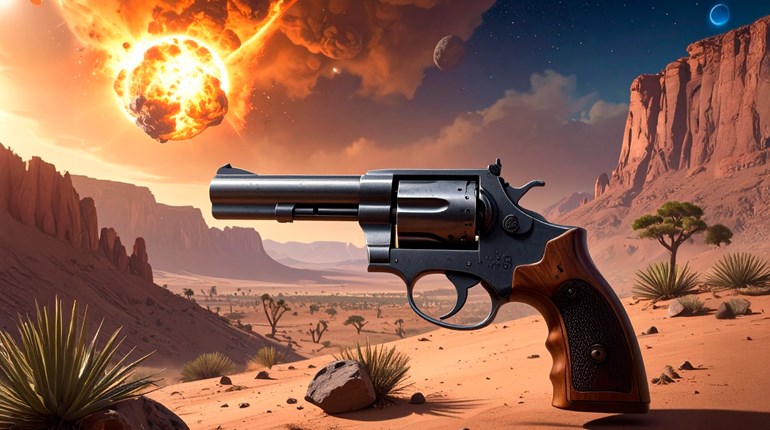
Even in today’s age of striker-fired, polymer-frame pistols, there’s still a place in every armory for a single-action-only semi-automatic handgun.
There was a time in America when one didn’t have to use the descriptor “single-action” or “SAO” (Single-Action Only) in reference to semi-automatic pistols of the fightin’ persuasion.
For the bulk of the 20th century, the very concept of a serious semi-auto on our shores was more or less synonymous with some variant of Colt’s Government Model of 1911. Well, perhaps maybe the Browning Hi Power, if one were an iconoclast or contrarian.
Around the time that armed good guys were transitioning en masse from revolvers to semi-autos, there was a brief flourishing of traditional double-action, or DA/SA, pistols in duty holsters and on the covers of gun magazines. From about the middle of the last decade of the 20th century up to the present year, however, the overwhelming majority of pistol toters have instead been carrying striker-fired handguns.
The classic single-action is still around and enjoys significant popularity (and a rabidly loyal fan base, in its 1911 form) but if there was a heyday of the SAO semi-auto in the holsters of the cognoscenti, it was probably in the late 1980s to early 1990s.
This action type is seeing a slight resurgence in interest, though, and even some new offerings. Pistols from Staccato can be found in the holsters of many a clueful shooter, and Wilson Combat sells every EDC X9 it builds. I’ve just spent the last few months wringing out one of the all-new High Powers introduced by FN America. (See my review on
page 44 of this issue.)
So how much sense does the traditional SAO make for carry use in 2022 AD? The best way to answer that question is to break it down into its pros and cons.
The most obvious entry in the “pro” column is that a classic SAO is generally the easiest action type to shoot well. This is because having a manual safety allows the manufacturer to bless these pistols with trigger pulls whose light weight and short travel means that the guns have to compete in their own category in action-shooting sports.
That manual safety also adds a cushion against error when moving about with the drawn pistol. So long as the safety is applied when running around or navigating a cluttered environment, a sudden stumble or fall, or a spastic clench of the strong hand triggered by a startling noise or sympathetic contraction (when suddenly grabbing for something with the support hand, the strong hand will want to clench at the same time) will not cause the pistol to discharge a round when such would be very bad, indeed.
These two pros, however, lead directly to their corresponding cons.
For instance, the light trigger with a very short travel that is such a help when trying to shoot on purpose becomes a massive liability if the safety is not religiously applied before reholstering. It’s an axiom that a trigger that is easy to pull on purpose is doubly easy to pull by accident.
It’s imperative that the user of an SAO semi-automatic have the application of the safety before reholstering ingrained as an automatic action.
A problem here is that reholstering a hot pistol is something that can happen when less than full attention is being given to the process. In the artificial environment of a training class, it can be easy to get caught up in assessing the string of fire just shot and want to get the gun put away and move on to the next drill, and somewhere in all that fuss, the added step of applying the safety gets forgotten.
Even worse, in the adrenaline-charged moments after an actual defensive gun usage, people’s minds are often racing and their thoughts are on a hundred things other than some “putting the gun away” checklist. That’s a classic time for an off-safe pistol to get shoved into a holster, sometimes with noisy results.
The final con against the classic SAO is that if the act of deactivating the safety on the draw isn’t ingrained, then in the hurry of having to actually use the pistol for real, the user may forget the safety with predictably bad consequences.
There are a variety of approaches taught for the proper use of the thumb safety on a modern (which is to say “drop safe”) single-action semi-automatic.
Of the several different ones I’ve been taught, the one I’ve settled on is pretty simple, repeatable and, for me at least, has become habituated after a reasonable amount of repetitions. (And by repetitions, I mean using it this way every time I’m handling the pistol, whether in casual range use, classes, matches, or whatever.)
Basically I take the safety off as the pistol is coming into a firing position. This can mean having it coming up into my sightline during a normal draw, or the muzzle rotating into a horizontal orientation if I’m shooting from a “Hard Two” retention position.
Conversely, any time the pistol comes out of a firing position, the safety is reapplied, whether this is because I’m reholstering, about to move with the pistol in my hand, or just want to bring the gun to a low ready and get a breather before the next string of fire.
“On Target, Safety Off. Off Target, Safety On.” Other people teach it other ways, but personally this seems to maximize the advantages of the SAO trigger while minimizing its disadvantages, and keeps the classic single action relevant for me in 2022.






































